Africa’s Tsavo National Park in Kenya is filled with epic wildlife, including the African Big 5 and stunning landscapes. Let’s discover just how big Tsavo National Park is, plus what you can find, and do, there.
How Big Is Tsavo National Park?
Tsavo National Park is 8,807 square miles in size. It’s the largest park in Kenya and over twice the size of Yellowstone in the United States.
This spectacular landscape was established as a park in 1948 and named after the Tsavo River that first runs through Tsavo West before gliding through Tsavo East. Still, very quickly, officials found the huge expanse difficult to manage. They divided it into two smaller parks for administrative benefits: Tsavo East and Tsavo West. Of the two, Tsavo East is the larger.
The Nairobi-Mombasa railway and high-speed highway marks the center split.
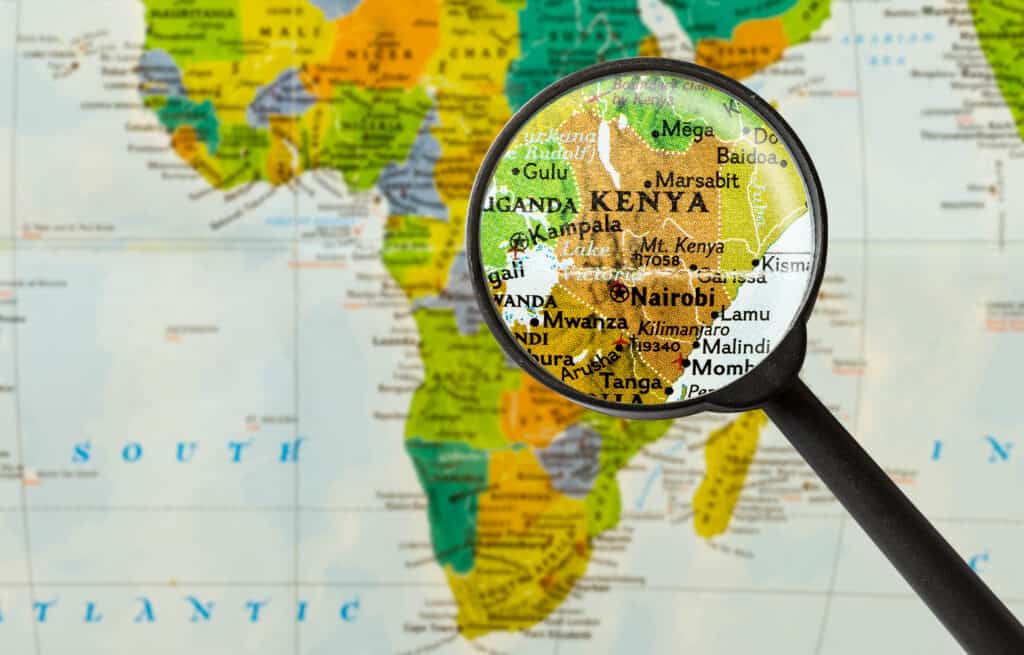
8,807 square mile Tsavo National Park sits in Kenya, Africa.
©iStock.com/naruedom
How Big Compared to Other Parks?
Tsavo’s 8,807 square miles is a hefty chunk of land. Here’s how it compares to other national parks.
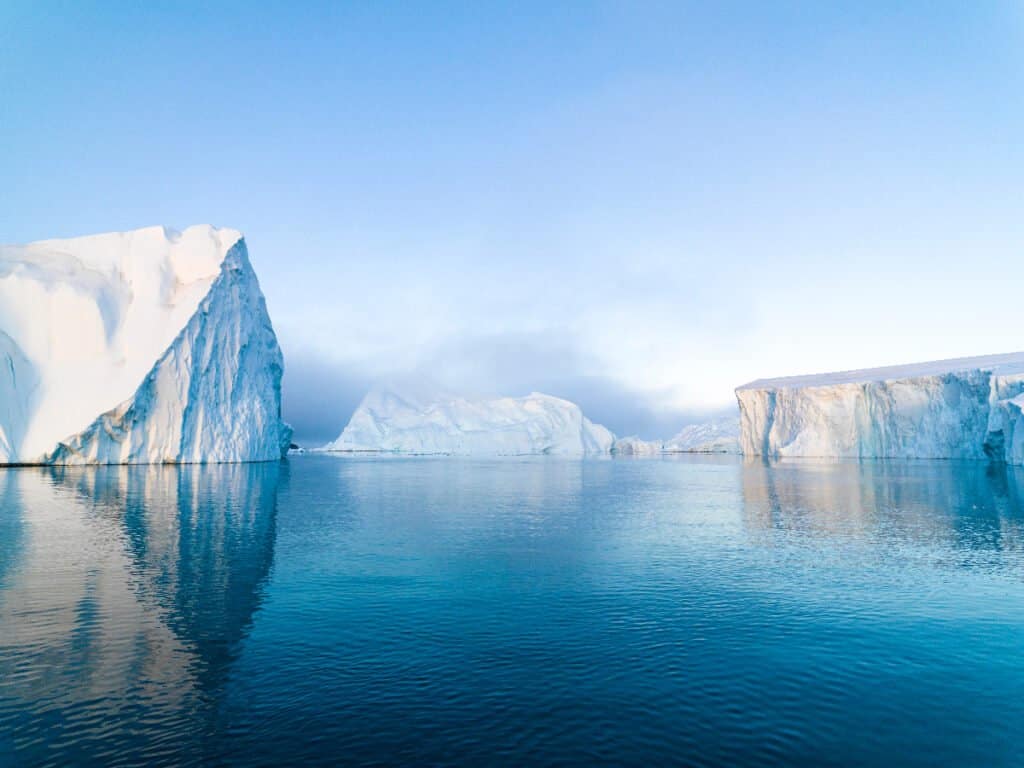
8,807 square mile Tsavo National Park is dwarfed by Northeast Greenland National Parks’ 375,000 square miles.
©murattellioglu/Shutterstock.com
Largest National Park in Africa
Namib-Naukluft National Park is nearly 20,000 square miles. It includes some of the Namib Desert and Atlantic Ocean coastline.
Largest National Park In the United States
Wrangell St. Elias National Park, Alaska, is over 20,000 square miles.
Largest National Park in Canada
Canada‘s Wood Buffalo National Park, with its 17,275 square miles, sits in northeastern Alberta and the southern Northwest territories.
Largest National Park in the World
The world’s largest national park by far is the pristine Northeast Greenland National Park, which covers 375,000 square miles. It’s Greenland’s only national park covering most of its uninhabited areas.
Where Is Tsavo National Park?
Tsavo National Park is situated in southeastern Kenya to the east of Mount Kilimanjaro, between Nairobi City and Mombasa.
What’s the Difference Between Tsavo East and Tsavo West Parks?
Both Tsavo East and Tsavo West Parks combine to make Tsavo National Park, but there are a few differences between the two administrative areas.
Tsavo East 5,303 square miles
Tsavo East is slightly bigger, much flatter, and mostly contains dry plains. Notable features are the Yatta Plateau, a 186.5-mile-long plateau with the longest lava flow in the world, plus epic Lugard Falls.
Tsavo West 3,500 square miles
Tsavo West is more popular with tourists because it contains more varied geology and wildlife. It’s packed with mountains and swamps and famous for its black rhino, elephants, and Masai lion.
Tsavo National Park’s Wildlife
Wildlife here is among the best and most varied in the world. All of Africa’s “Big 5” — lions, leopards, elephants, buffaloes, and rhinos — live there and draw in vast amounts of tourists each year.

African lions live in Tsavo National Park in Kenya.
©CherylRamalho/Shutterstock.com
Other epic wildlife include the following.
Carnivores
Cheetahs, genet cats, hyenas, jackals, African wild dogs, crocodiles, snakes, and chameleons.
Herbivores
Elephants, giraffes, zebra, gazelle, antelope, hippo, and haartbeest.
On top of this, Tsavo is home to over 500 bird species, including African orange-bellied parrots, golden-breasted starlings, Somali ostriches, and vulturine guineafowls.
Endangered Animals in Tsavo National Park
This massive Kenyan park is home to critically endangered species such as the hirola (Hunter’s hartebeest) and Grevy’s zebra.
Despite wildlife rangers’ best efforts and powerful legislation, poaching is still a huge problem in Tsavo National Park for elephants and rhinos in particular. Big cats and giraffes are poached and licensed hunting targets, too.

Critically endangered hirola live in Tsavo National Park.
©OliverZeid/Shutterstock.com
Park Activities
Kenya is malaria-prone. Before heading to Africa’s Tsavo National Park, all visitors must have the correct vaccinations.
The best time to visit is between June and October and January to February because wildlife is most active then. One of Tsavo Park’s perks is its resident wildlife. Unlike the Serengeti, huge herds of wildebeest do not move in and out.
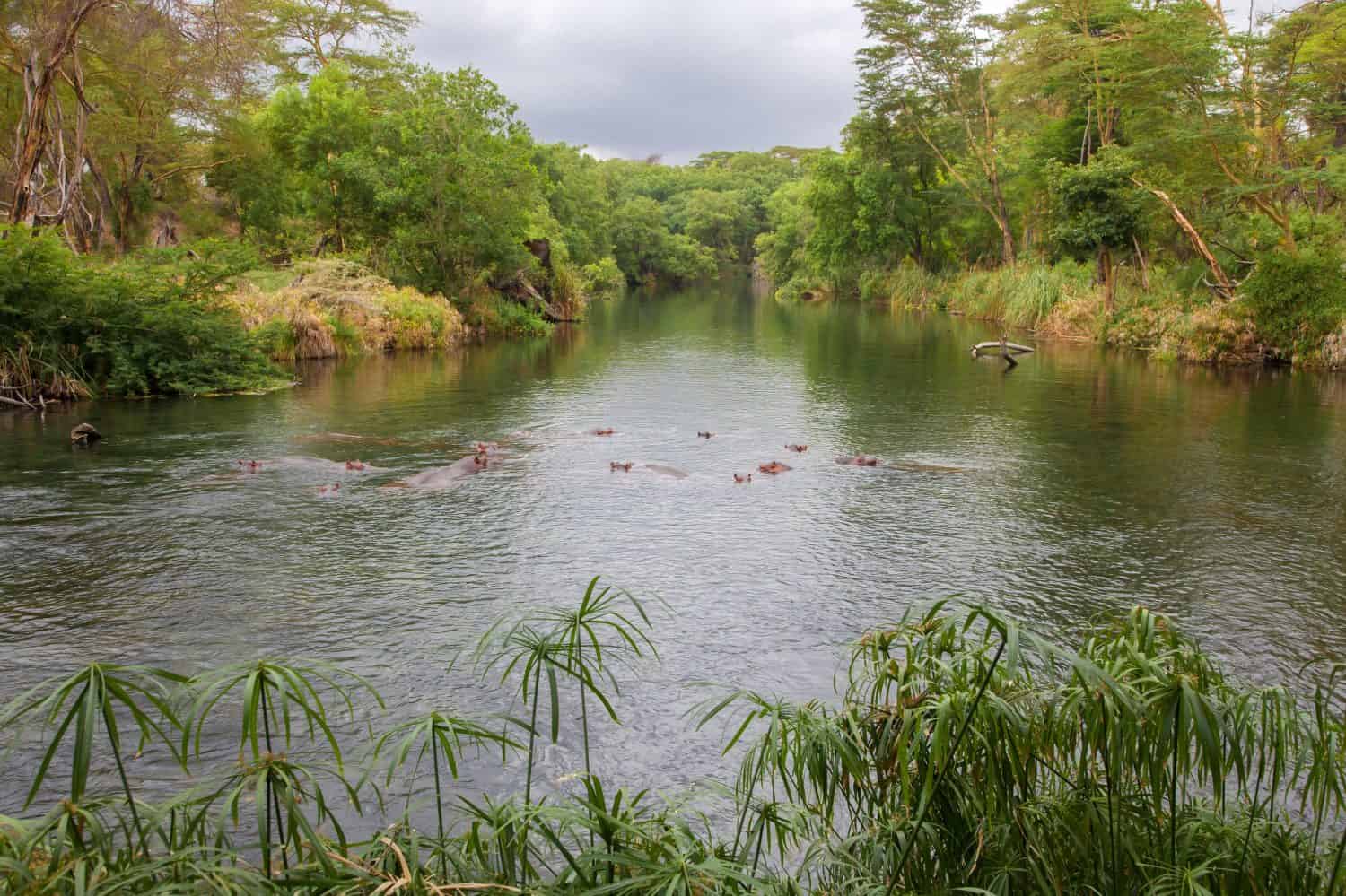
Mzima Springs is home to hippos and crocodiles.
©Eugen Haag/Shutterstock.com
Which Park Is Best?
If African wild dogs and grassland herbivores (plus their predators) top the list, visit Tsavo East. This area is open as far as the eye can see. It’s miles of mostly grasslands and savannahs. You can go a whole day without seeing another person. Take a guided safari to stay safe and boost the chances of spotting wildlife.
However, Tsavo West is more popular due to its varied vegetation, mountains, rocks, watering holes, and swamps.
In Tsavo West, Mzima Springs is an amazing destination. It’s a natural reservoir with a built in glass viewing platform so tourists can watch fish, hippos, and crocodiles in their natural habitat.
Tsavo West is also good for rock climbing, living a village experience, and enjoying a riverside guided walk. A magnificent rhino reserve lies here and near Poacher’s Lookout in the Chyulu Hills and Mount Kilimanjaro towers in the far distance.
Tsavo National Park’s Threats
Despite the ecological and species-rich environment, Tsavo National Park is threatened by several issues.
Poachers of bushmeat and ivory still kill numerous rare animals, even though the Kenyan Wildlife Service protects them with extensive wildlife patrols. Hundreds of rangers have died protecting Tsavo Park’s wildlife.
In addition, infrastructure developments infringe on the park animals’ movements, and habitat destruction from brushfires and buildings not only prevents animals from using the land but fragments habitats and squeezes territories.
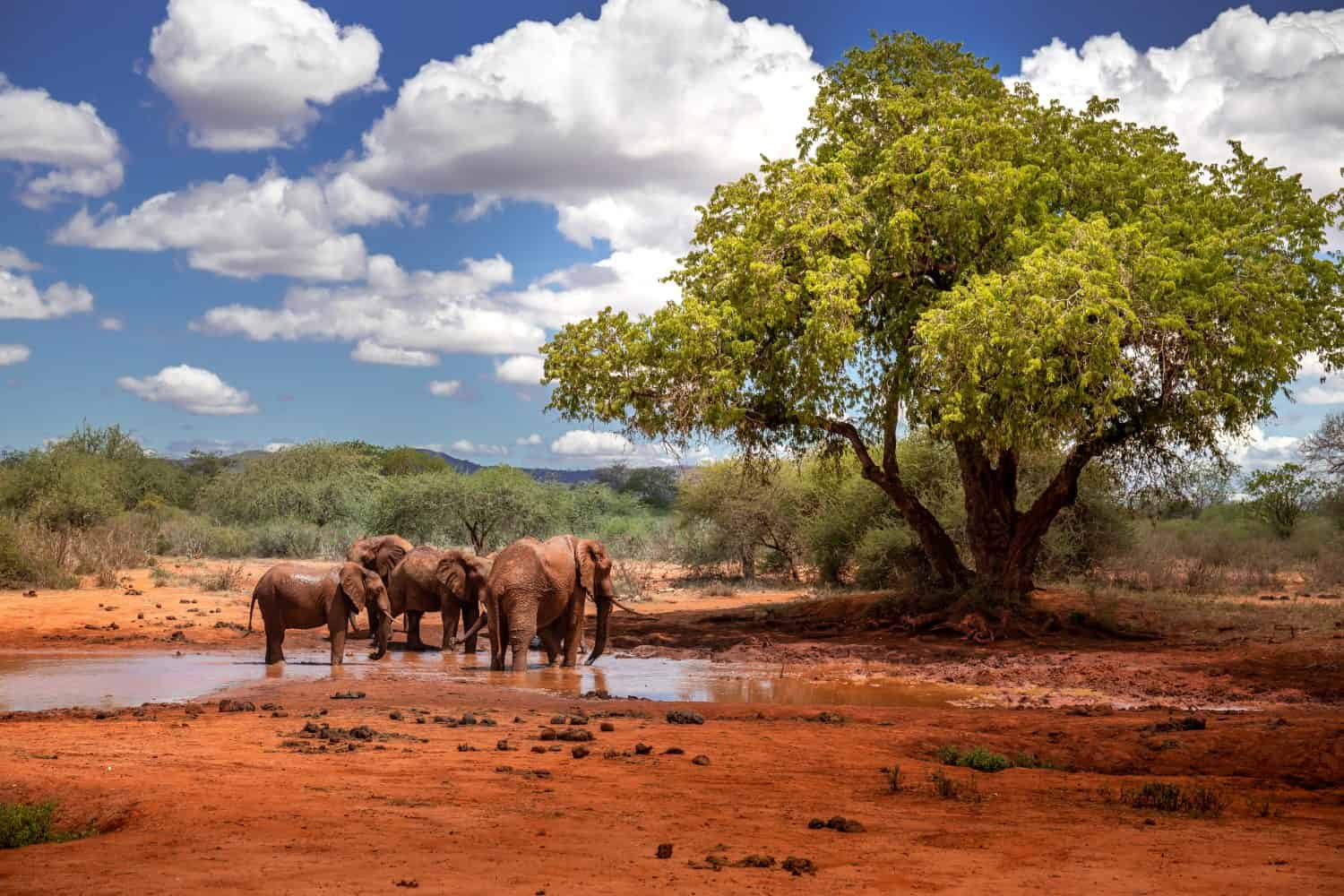
Ivory poachers threaten Tsavo National Park’s elephant population.
©Jan Wehnert/Shutterstock.com
Tsavo National Park: Size
Let’s recap on our original question — how big is Tsavo National Park?
Kenya’s Tsavo National Park is 8,807 square miles. It’s the largest park in Kenya and full of epic wildlife, including Africa’s Big 5. For administrative reasons, it’s separated into two unequal halves by the railroad and highway system into Tsavo East and West Parks. Tsavo East has the lion’s share of space at 5,303 square miles versus Tsavo West’s 3,500.
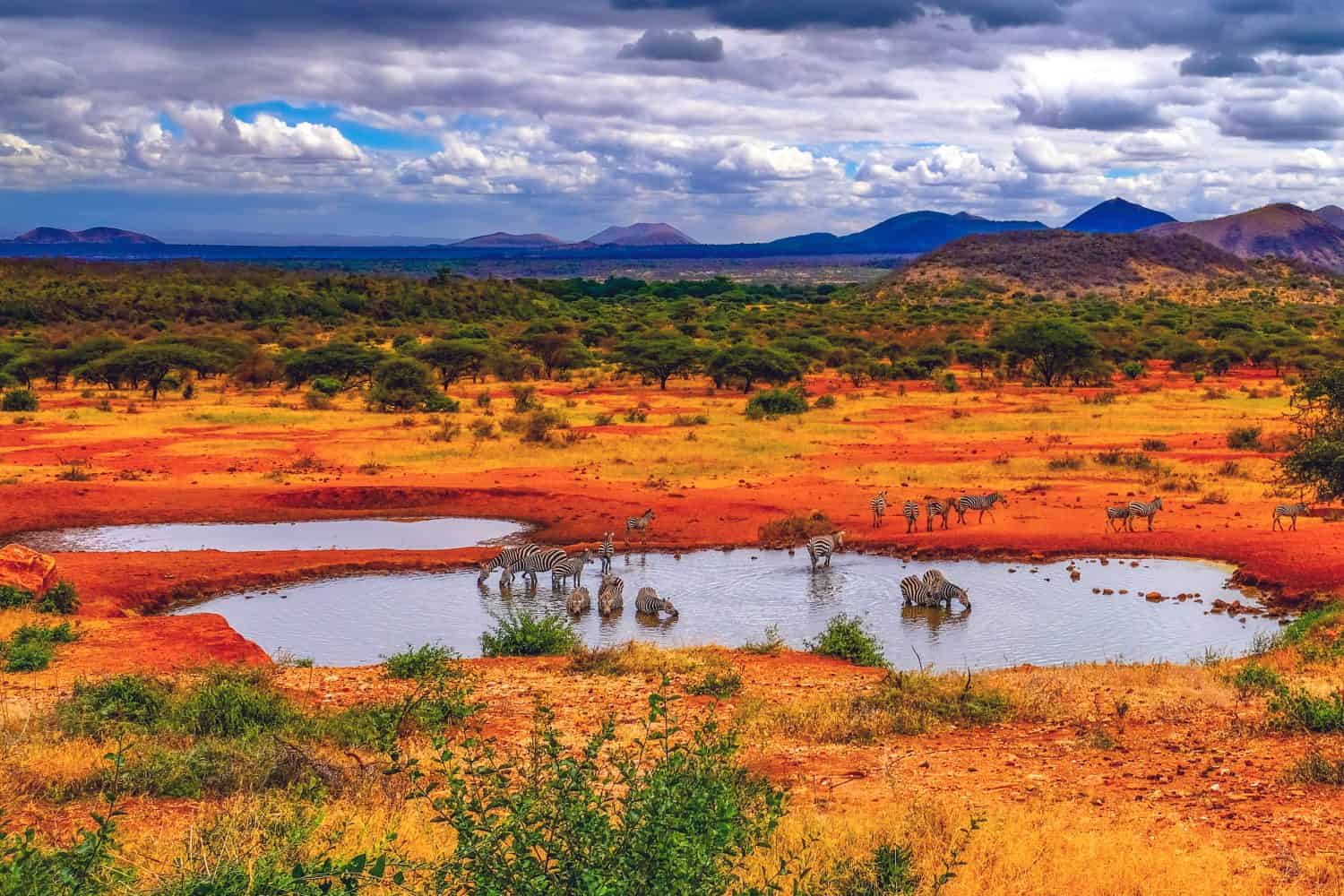
Combined East and West Tsavo National Parks create 8,807 square miles of epic landscape.
©Hiran Perera Photography/Shutterstock.com
The photo featured at the top of this post is © Maciej Czekajewski/Shutterstock.com
Thank you for reading! Have some feedback for us? Contact the AZ Animals editorial team.







